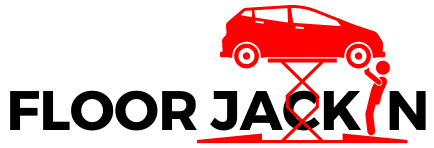
Whether we’re discussing changing a flat tire or tweaking with its undercarriage, it is important to note that a hydraulic floor jack can be invaluable in a lot of situations.
Unlike other tools, Floor jacks are also not immune to problems and malfunctions, and sometimes they too need to be fixed. So, let’s have a look at the most common floor jack problems and the appropriate way of fixing them.
What is the floor jack used for?
As you might already know Hydraulic jacks simplify the movement of large or heavy items. The jack’s hydraulic system simply multiplies a worker’s efforts, allowing one person to successfully lift and maneuver heavy loads with little physical strain.
Jacks are also commonly used to suspend heavy objects in midair to provide maintenance access that leads to minimal exertion on the operator’s part. Though they’re built to be rough and tough, hydraulic jacks can sustain damage from improper maintenance, heavy use, environmental elements, and other factors that compromise their ability to perform.
Regular hydraulic jack repair or maintenance reduces the impact of damage caused by these issues by identifying points of damage early. This helps to take fast corrections of any problems. This is especially considered crucial for older jacks that have been operational for several years.
Signs that indicate Hydraulic jack need repair and troubleshooting
Regardless of the application or the type of jack, there are few issues that are common within this tool category. Well, maintenance problems can compromise a jack’s ability to operate efficiently and effectively. Plus, it could also negatively impact operator safety. If your equipment exhibits the signs mentioned below, it is important to coordinate jack repairs without any further delay.
Damaged Frame
There is no doubt that without a structural sound frame, It is possible that your entire unit falls apart under a heavy load. Such damage is typically hard to be repaired and leaves the user with only one option, purchase of a new hydraulic jack.
Jack Does Not Fully Extend or Slow to Release
It is important to know that Hydraulic jacks depend on fluid-driven pressure to create proper movement. So, when the flow is compromised, it can cause some serious problems with lifting mechanisms.
Squeaky or Damaged Wheels
One of the most common signs in the Hydraulic jack is excessive noise issuing from your wheels which usually means it’s time to replace those parts. Most commonly, the application of heavy oil provides enough lubricant in order to prolong the life of metal support structures.
Damaged Frame
There is no doubt that without a structural sound frame, your entire unit could possibly fall apart under a heavy load. Such damage is typically hard to be repaired and requires the purchase of a new hydraulic jack.
Foamy or Milky Oil
This is the most visible sign in the Hydraulic jack. If you notice discolored or frothy oil, it means water has infiltrated the system. If it is not managed quickly, this condition will possibly cause irreversible internal corrosion.
Handle Kicks Back
You might be aware of the fact that it is not considered wise to stop using a hydraulic jack instantly if the handle kicks back up after a downstroke. No doubt that this condition is extremely dangerous for operators. The best part is that a repair professional can restore the unit’s function.
Leaks
The most obvious sign that causes trouble in most of the equipment is regarding leakages. Usually, it depends on which fluid is leaking from your unit, this sign indicates a range of potential problems. A proper examination of the unit is necessary to resolve the issue.
Rams Won’t Lift
When rams fail to respond properly, Mostly this usually points to a lack of hydraulic fluid. The solution is quite simple, just add more fluid, turn the jack carefully to its release position then pump a few times in order to release trapped air, and at last, refill the reservoir. So, once the seal is replaced, the unit should function properly.
Overloaded Jack Trips Safety Valves
Among the most common issues, this one is also very crucial to know. If you notice that the load is too heavy, the jack’s safety valves will engage, which will definitely cause the jack to stop lifting. It is strongly recommended to consider the user manual in order to identify the safety valve and follow the mentioned instructions properly to reset it.
Professional Guidance
Hydraulic jacks are considered an essential part of many industrial and commercial operations. From production floors to warehouses, these devices enable the efficient and simple movement of massive products and components. Please note that hydraulic jacks are not indestructible.
Same as all machinery, attentive maintenance and, prompt repairs are both surely keys to prolonging the life of the unit. The best thing is that many common hydraulic jack repairs can be performed by novices or those with limited mechanical skills. Still, proper correction of many issues will definitely benefit from professional input.
- Craftsman Jack Stands Review - October 18, 2022
- OTC 1545 Motorcycle Lift Review - October 18, 2022
- Pro Lift Jack Stand Review - October 17, 2022
